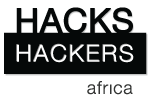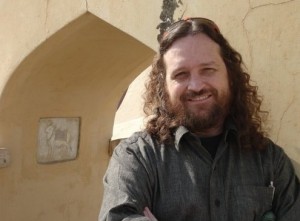Justin Arenstein: Hacks and hackers working together in Africa
 As new media continues to reshape the world of journalism, newsrooms need to reinvent themselves to stay relevant. But not all journalists and organizations have the technological skills to become innovative news providers. This is where Hacks/Hackers is stepping in to fill the gap. Hacks/Hackers is a grassroots journalism organization which brings together journalists and software developers. Originating in the United States, chapters of the movement are rapidly spreading around the globe, including Africa. The idea is to hook up hackers (developers and software writers) who sort and visualize information together with hacks (journalists) who are excited about using new technology to tell great stories.
As new media continues to reshape the world of journalism, newsrooms need to reinvent themselves to stay relevant. But not all journalists and organizations have the technological skills to become innovative news providers. This is where Hacks/Hackers is stepping in to fill the gap. Hacks/Hackers is a grassroots journalism organization which brings together journalists and software developers. Originating in the United States, chapters of the movement are rapidly spreading around the globe, including Africa. The idea is to hook up hackers (developers and software writers) who sort and visualize information together with hacks (journalists) who are excited about using new technology to tell great stories.
 Justin Arenstein is one of the driving figures behind the Hacks/Hackers movement in Africa, where there are currently 13 chapters. Arenstein, a South African, is currently a Knight International Journalism Fellow in charge of the Digital Innovation Program at the Africa Media Initiative. He also is a consulting strategist for Google on data and digital journalism issues (Twitter: @justinarenstein). DW Akademie’s Kate Hairsine talked to him about Hacks/Hackers in Africa.
Justin Arenstein is one of the driving figures behind the Hacks/Hackers movement in Africa, where there are currently 13 chapters. Arenstein, a South African, is currently a Knight International Journalism Fellow in charge of the Digital Innovation Program at the Africa Media Initiative. He also is a consulting strategist for Google on data and digital journalism issues (Twitter: @justinarenstein). DW Akademie’s Kate Hairsine talked to him about Hacks/Hackers in Africa.
Is Hacks/Hackers in Africa the same as in the United States?
In North America, Hacks/Hackers is purely bringing together journalists and developers. In Africa, we have widened the definition of what media is. We have defined media as any civic engagements that strengthen civic discourse so this include bloggers, for example. In addition, in Africa we see Hacks/Hackers as having four constituencies. As well as journalists and developers, we have included social justice activists because these are people who sit on a lot of the data. We have also very explicitly included user-interface experts – these are people who design the way normal citizens interact with data. Their inclusion is incredibly important not just because of the technology itself but also because of the challenges you face in Africa in getting information out to average citizens.
What benefits can the Hacks/Hackers model bring to journalists in Africa?
It is a way for conservative and often resource-strapped media companies to outsource their research and development. You get journalists who understand what technology is about coming to these meetings and they suddenly find it’s a meeting of minds – there are people from a technology space and a data space and a mobile space. Then they take this synergy back to their newsrooms and suddenly you have a completely different voice at the newsroom desk.
Invariably in newsrooms in Africa and around the world, news agendas are shaped by people who already have power and influence. These are people in governments or people working for large corporations or working for large non-governmental organizations. The voices that we are getting from this new kind of emergence disruptive space are more crowd-sourced and more kind of grassroots because of the people who get together in these meet-ups. We are also showing in many of the newsrooms – specifically in Kenya and South Africa – that some of these new technologies these guys are experimenting with dramatically increases the impact and reach of these traditional media.
What kinds of things are newsrooms in Kenya and South Africa doing?
Kenya is a bit ahead of the other chapters simply because they have been running longer. They were first established in June 2012 (Twitter: @HacksHackersNBO). In Kenya, some of the hungrier young media, not the ones who dominate the media sector but the up-and-coming challengers, are involved. And specifically, the Star newspaper which is a blue-collar newspaper targeted at a younger audience, has seen a lot of their journalists get involved in the Hacks/Hackers chapter. And they have then come back to their newsroom where they have built things like a crowd-sourcing citizen journalism app using a mobile android-based app as well as an SMS app. (The app can be downloaded for free on Google Play here and you can read more about the app here.) The app does two things: firstly, it allows members of the public to ask questions. So a journalist will say, “I am sitting in a press conference with the minister of education. What do you as the public want me to ask as a question?” That changes the power dynamics completely. It is no longer a bunch of high priests at a political desk in a newsroom deciding what the questions should be. It’s the actual readers who are deciding and who have a direct channel to the interviewee. The other thing the app does is allow the news desk to actually commission people to go out and cover stories. So they’ll put out a call saying: “we are covering the Kenyan army in Somalia and we are looking for these kinds of images from these front-line provinces.” And then citizen journalists who are registered can respond.
One of the ideas behind Hacks/hackers is that developers can help a journalist make data easier to understand by putting the data into a visual form, for example. It’s a fantastic idea to train people to use data, but is there actually any data in Africa for them to work with?
In many African countries, the data is actually locked in paper. So as part of these hacks and hackers activities, we have data liberation scrapathons. That means for a week at a time, people will get together and they’ll target a specific institution or a specific issue and they will go out and source documentation. Then they’ll then scan the documents and scrape the information off that documentation, turning it into structured data that people can start building stuff with. The data is then deposited into a crowd-sourced data portal, Africa open data, which is now the largest data portal in Africa. It’s already three times the size of the Kenyan government’s open data portal. It shows that there is data available in Africa, we simply need to find it, digitize it and clean it for people to be able to use it. Then there is the question of whether the data is credible.
How do you check that?
This is where connections with social justice and other grassroots organizations are essential. For example, where we have scraped data about the GIS locations of rural schools from official government records, we can then turn to other organizations and ask if there is in fact physical buildings where governments say they are. In the case of Kenya, we found that there usually are physical structures but they are nowhere near where the government thinks there are. Sometimes they are up to 10 to 15 km away. Why is that important? Because when the government does its budget resource allocation planning, it uses this data. And if this data is flawed, it means their resource development plans, such as where they are putting in roads, pipelines for water, or electricity, are not going to attend the beneficiaries. So it is essential that there is accuracy. We are finding that keeping these social justice people in the loop helps verify such information.
How much do journalists skills need to be developed though for them to be able to work with data?
That is one of the big challenges. Science-based education in Africa is a rare thing. As a result, Hacks/Hackers has taken a slightly different approach to the US and European approach. In the United States, we hear a lot of talk about computational journalists. These are journalists who are learning to do programming themselves. In Africa, we are trying to build multidisciplinary teams instead. We are bringing in the narrative journalists – the storytellers, and we are pairing them up with people who have some technologist skills.
Why are Hacks/hackers putting such an emphasis on data?
Data journalism gives newsrooms new tools to parse or to analyze or to wrangle information. So suddenly, rather than getting a press release saying there is an epidemic of cholera, the newsroom can also now delve into records from the United Nations and the World Bank and civil society and actually analyze the trends and also what potential causes could be. You can start by mashing up the data, by incorporating climatic information, socio-demographic information, all kinds of information to try to get down to root causes. The resulting story is potentially far richer and far deeper and far more meaningful that the newsroom could deliver otherwise.




Feedback